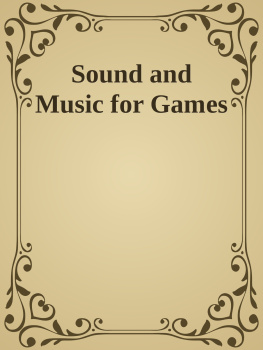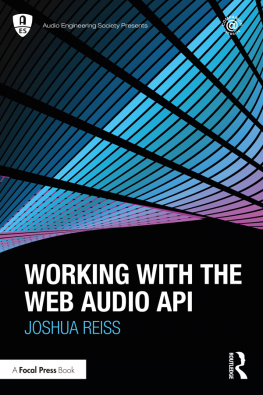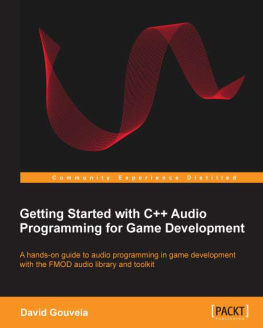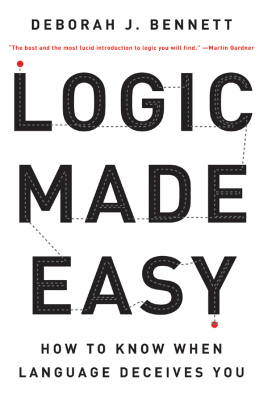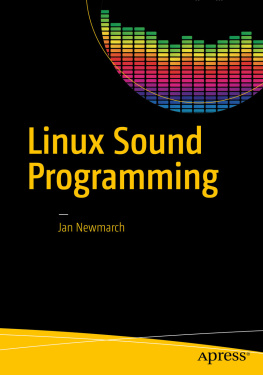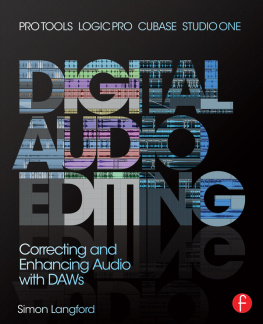Cover

| title | : | Users' Guide to Logic Audio 5 |
| author | : | Bennett, Stephen. |
| publisher | : | Course PTR |
| isbn10 | asin | : | 1929685610 |
| print isbn13 | : | 9781929685615 |
| ebook isbn13 | : | 9780585476902 |
| language | : | English |
| subject | Logic Audio, Sequencer (Music software) , Music--Computer programs. |
| publication date | : | 2002 |
| lcc | : | ML74.4.L642B46 2002eb |
| ddc | : | 780.285 |
| subject | : | Logic Audio, Sequencer (Music software) , Music--Computer programs. |
Page i
Users' Guide to LOGIC AUDIO 5
STEPHEN BENNETT
Page ii
Users' Guide to Logic Audio 5
Copyright 2002 Muska & Lipman Publishing, a division of Course Technology
Authorized US edition from the original edition published by PC Publishing. Copyright 2002. All rights reserved. No portion of this book may be reproduced in any form or by any means, electronic or mechanical, without written permission from the Publisher.
All copyrights and trademarks used as examples or references in this book are retained by their individual owners.
Credits: Senior Editor, Mark Garvey; Production Editor, Rodney A. Wilson; Cover Design, Chad Planner, Pop Design Works.
Publisher: Andy Shafran
Technology and the Internet are constantly changing; due to the lapse of time between the writing and distribution of this book, some aspects might be out of date. Accordingly, the author and publisher assume no responsibility for actions taken by readers based upon the contents of this book.
Library of Congress Catalog Number: 2002113702
ISBN 1-929685-61-0
5 4 3 2 1
Educational facilities, companies, and organizations interested in multiple copies or licensing of this book should contact the publisher for quantity discount information. Training manuals, CD-ROMs, and portions of this book are also available individually or can be tailored for specific needs.

Page iii
Preface
Sequencers have come a long way in a short time. They started out as slavish automatons, converting your subtle playing into rock like solidity and top ten hits. Nowadays, sequencers form the heart of many modern recording studios. They record MIDI data with great accuracy. They mimic audio tape machines. They mix and manipulate your recordings. They do things to your data that were only dreamt about previously.
And with this complexity comes confusion. Modern sequencers can do a multitude of things. These can sometimes get in the way of the prime purpose of the software producing music.
Making Music with Emagic Logic Audio provides a step-by-step approach to using the software. The book is designed to complement the manual, not replace it. It's aimed at the first time user as well as someone comfortable with the program who wants to delve deeper into the program's complexities.
The author is a composer and post production engineer who uses Logic Audio every day. This is the book he wishes had been available when he first got to grips with the fascinating software that is Logic Audio.
Page iv
Acknowledgements
I would like to thank the following people for their help in producing this book:
Gerhard Lengeling, Andreas Dedring, Michael Hayden and Sascha Kujawa at Emagic; Dave Marshall at Sound Technology UK; the Logic Users List, especially Fokke de Boer, Jon Cotton, Adam Peacock and Thomas Taylor, and the cats at Chaos.
Page v
Contents
Introduction | |
Installing Emagic Logic Audio | |
Getting started with Logic Audio | |
Using Logic Audio | |
The Score editor | |
The Environment | |
The Arrange page | |
The Event list editor | |
The Matrix editor | |
The Transport bar | |
The Hyper editor | |
Key commands | |
The Sample editor and Audio window | |
Plug-ins and virtual instruments | |
Choosing and installing an audio interface | |
Mixing, mastering and automation | |
Other useful Logic Audio information | |
Appendix 1 Logic Audio menus | |
Appendix 2 Preferences and song settings | |
Appendix 3 Glossary | |
Appendix 4 Logic Audio and the internet | |
Appendix 5 About Audio files | |
Appendix 6 Choosing a computer for Logic Audio | |
Index | |
Page vi
This page intentionally left blank.
Page 1
1 Introduction
Logic Audio is available for the following computer platforms: Windows 98/2000/XP and the Apple Macintosh. If you have an Apple Powermac G4, Logic Audio takes advantage of the processor's velocity engine. The Mac version runs under MacOS (version 5.x requires MacOS 9), but not under the 'Classic' MacOs emulation within MacOSX. Logic Audio can also take advantage of dual processors in Apple computers running under OS9. With Windows 2000 and XP, dual processor usage is controlled by the operating system itself. Users with older 68K Macs can run pre version 5 Logic with suitable audio hardware such as Digidesign's Audiomedia or Pro Tools. The last version for the Atari platform remains at 2.5 and no further development is planned. As a result, this book will concentrate on the Windows and Macintosh versions of the software. However, version 2.5 is a very powerful piece of software and most of its features are covered in this book.
Apple, who purchased Emagic in July 2002, have announced the cessation of development for the Windows version of Logic Audio after version 5.x, although they have said that they will support the platform for the foreseeable future with bug fixes and, possibly, new features. This book covers both Macintosh and Windows versions of Logic Audio up to and including, version 5.x
Emagic are known for their constant upgrade program, and subreleases of Logic are available at regular intervals from your Logic supplier or from the Internet (see Appendix 4). The aim of Logic's developers has been to make the software on both the Macintosh and Windows platforms as similar as possible. Consequently, differences tend to be those of which computer keys are used as 'modifier keys' and other differences between the two operating systems. Just because it says Mac only or WIN only in the book doesn't mean it hasn't been implemented in your version of Logic. It just means it wasn't at the time of writing. So give it a try, it may be there.
Next page

